South Africa Flag Meaning
A Y-shaped design with six colors converging toward the flag pole, representing the convergence of diverse elements in South African society and the country's path forward as a unified nation after the end of apartheid and the transition to democracy.
- Continent
- Africa
- Adopted
- 1994
- Ratio
- 2:3
- Colors
- black, gold, green, white, blue, red
- Designer
- Frederick Brownell
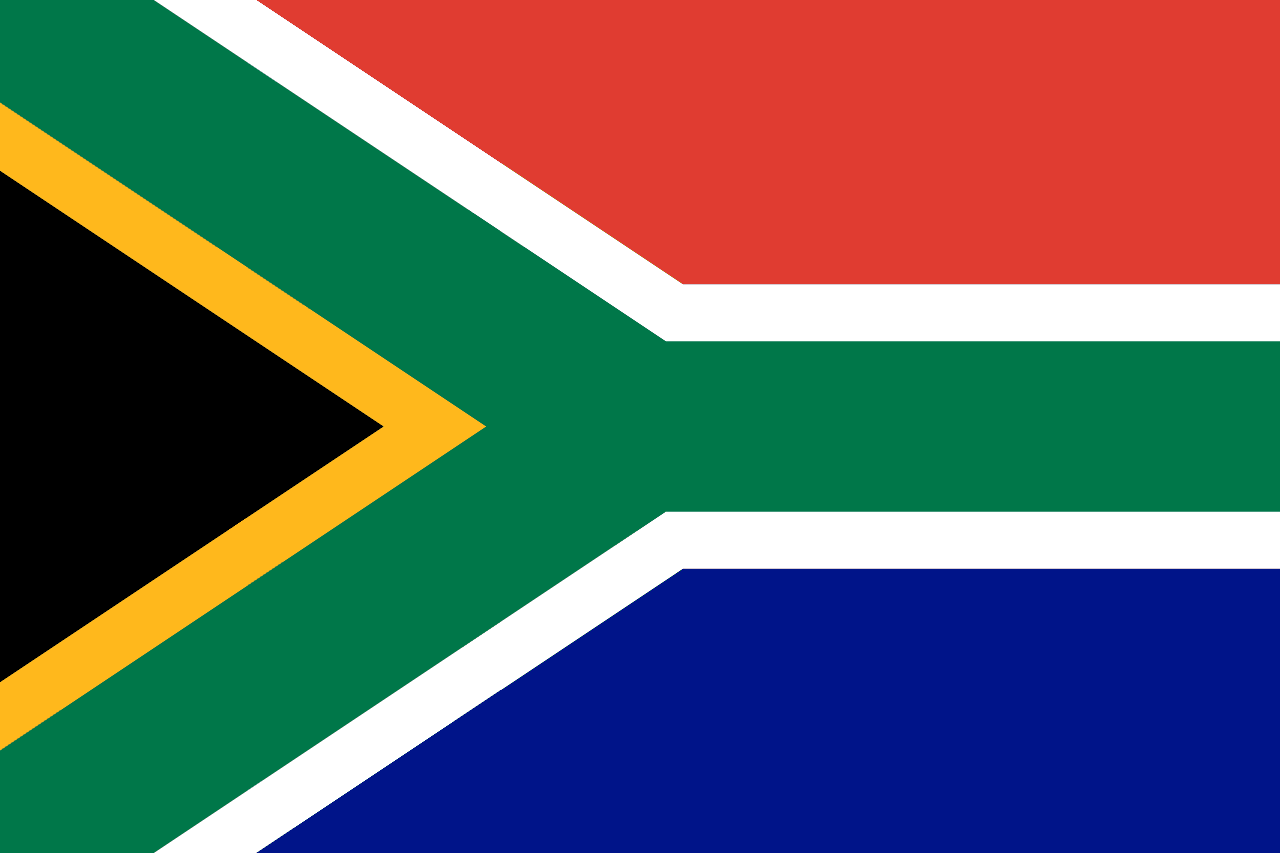
Symbolism
Black Triangle: Represents the black African majority population and their journey toward equality and freedom, symbolizing the end of oppression and the democratic participation of all citizens.
Gold Triangle: Represents the mineral wealth of South Africa, particularly gold and diamonds, symbolizing the natural resources that have shaped the country's history and economy.
Green Y-Shape: Represents the fertile land and natural environment of South Africa, symbolizing growth, harmony, and the convergence of different peoples into a unified nation.
White Stripe: Represents the white minority population and the peaceful transition to democracy, symbolizing reconciliation and the inclusion of all South Africans in the new nation.
Blue Stripe: Represents the endless possibilities of the new South Africa and the open skies above the country, symbolizing hope and the bright future ahead for all citizens.
Red Stripe: Represents the blood shed during the struggle against apartheid and for freedom, symbolizing the sacrifice made by those who fought for justice and human rights.
Convergence Design: The Y-shape represents the convergence of diverse elements in South African society, moving from division toward unity, symbolizing the country's transformation from apartheid to democracy.
History
- Pre-Colonial Era: Various African peoples including the Khoikhoi, San, and Bantu-speaking groups inhabited the region for thousands of years, developing sophisticated societies and trade networks.
- 1652-1795: Dutch settlement at Cape Town established colonial rule and introduced slavery, while trekboers expanded inland, leading to conflicts with indigenous peoples over land and resources.
- 1795-1910: British rule brought English settlers and new conflicts, including the Great Trek of Afrikaner voortrekkers, wars with Zulu and Xhosa kingdoms, and the Anglo-Boer Wars.
- 1886-1910: The discovery of gold and diamonds in the interior created boom towns and attracted international investment, while also intensifying racial conflicts and labor exploitation.
- May 31, 1910: The Union of South Africa was created as a British dominion, uniting four colonies but establishing white minority rule and excluding the black majority from political participation.
- 1948-1994: The National Party implemented apartheid, a system of institutionalized racial segregation and white supremacy that denied basic rights to the black majority and other non-white groups.
- 1912-1990: The African National Congress (ANC) led resistance to white minority rule, evolving from peaceful protest to armed struggle, with leaders like Nelson Mandela becoming global symbols of freedom.
- 1960-1990: International sanctions and internal resistance intensified pressure on the apartheid regime, while events like the Sharpeville Massacre and Soweto Uprising highlighted the system's brutality.
- February 11, 1990: Nelson Mandela was released from prison after 27 years, beginning negotiations that would lead to the peaceful transition from apartheid to democracy.
- April 27, 1994: South Africa held its first democratic elections open to all races, with Nelson Mandela becoming president and the new flag being adopted to represent the 'Rainbow Nation.'
- April 27, 1994: The current flag was adopted on the same day as the democratic elections, replacing the apartheid-era flag and symbolizing the birth of the new South Africa.
- 1994-Present: Post-apartheid South Africa has struggled with economic inequality, crime, corruption, and service delivery while maintaining democratic institutions and constitutional rights.
Trivia
- South Africa has 11 official languages, more than any other country, reflecting its incredible linguistic and cultural diversity across different ethnic groups.
- The flag represents the 'Rainbow Nation,' a term coined by Archbishop Desmond Tutu to describe South Africa's diverse population living together after apartheid.
- South Africa is the only country to voluntarily dismantle its nuclear weapons program, destroying six nuclear bombs in the early 1990s before the democratic transition.
- The country has the world's largest known reserves of platinum, manganese, and chromium, and is a major producer of gold and diamonds that have shaped its history.
- South Africa has three capital cities: Cape Town (legislative), Pretoria (executive), and Bloemfontein (judicial), reflecting the compromise during unification in 1910.
- The flag flies over a country that produces some of the world's finest wines, with the Western Cape wine regions attracting international recognition and tourism.
- Traditional African cultures include the Zulu, Xhosa, Sotho, and many others, each with distinct languages, customs, and artistic traditions that enrich South African heritage.
- South Africa has remarkable biodiversity, with unique ecosystems like the fynbos and being home to the 'Big Five' animals that attract safari tourists from around the world.
- The country has a complex cuisine reflecting its diversity, including traditional African dishes, Afrikaner boerewors and biltong, Indian curries, and Cape Malay cooking.
- Nelson Mandela became a global icon of reconciliation and human rights, with his approach of forgiveness rather than revenge helping prevent civil war during the transition.
- South Africa has significant economic inequality, with some of the world's highest Gini coefficients, creating ongoing social tensions and political challenges.
- The country has a vibrant arts scene including literature, music, and visual arts that address themes of identity, history, and social justice in the post-apartheid era.
- South Africa's Truth and Reconciliation Commission, led by Desmond Tutu, became a model for transitional justice and dealing with past human rights violations.
- The flag represents a country facing ongoing challenges with corruption, crime, unemployment, and service delivery while maintaining one of Africa's most robust democracies.
- Despite its problems, South Africa remains the continent's most industrialized economy and continues to play a leading role in African affairs and international diplomacy.
Related Countries
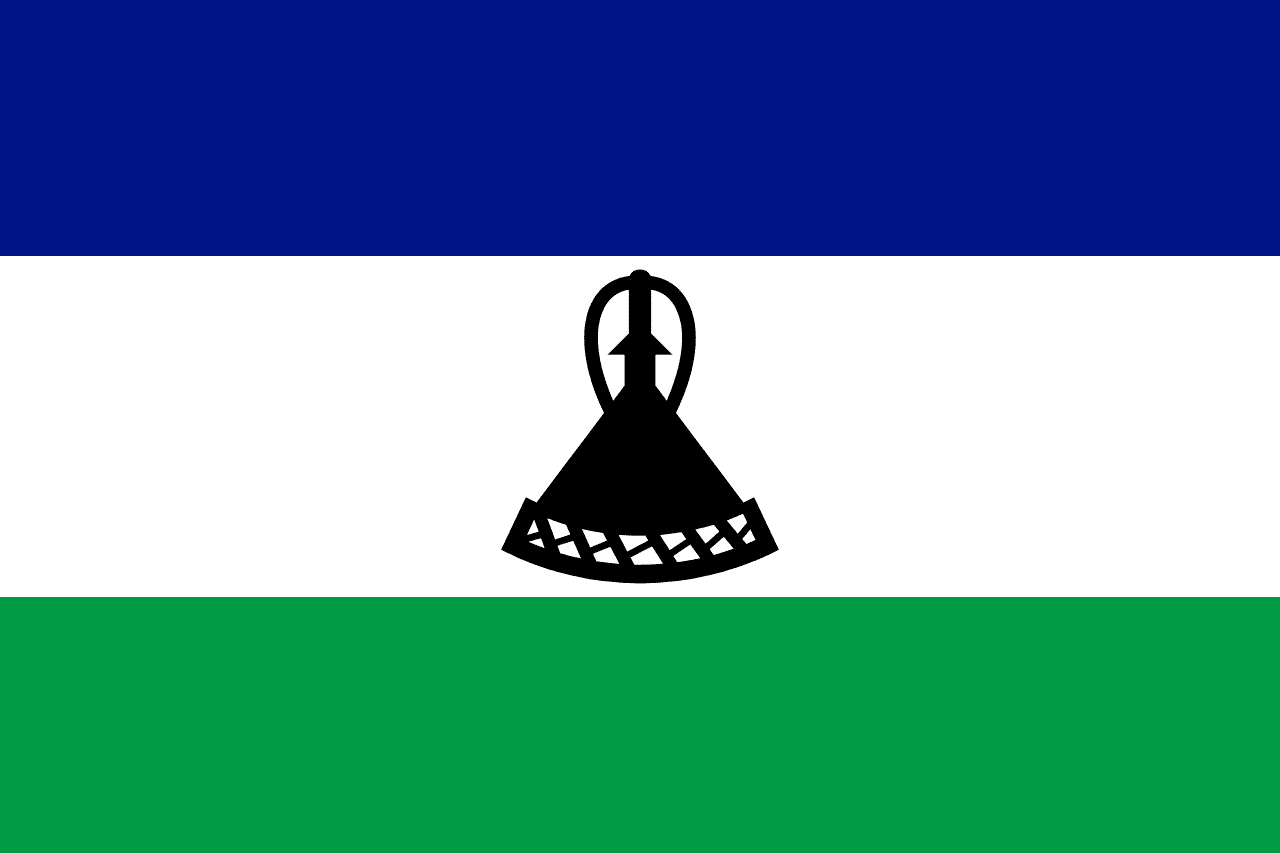
Lesotho
Africa
Three horizontal stripes of blue, white, and green with a black traditional Basotho hat (mokorotlo) centered on the white stripe, representing peace, rain, prosperity, and the cultural heritage of this mountain kingdom completely surrounded by South Africa.
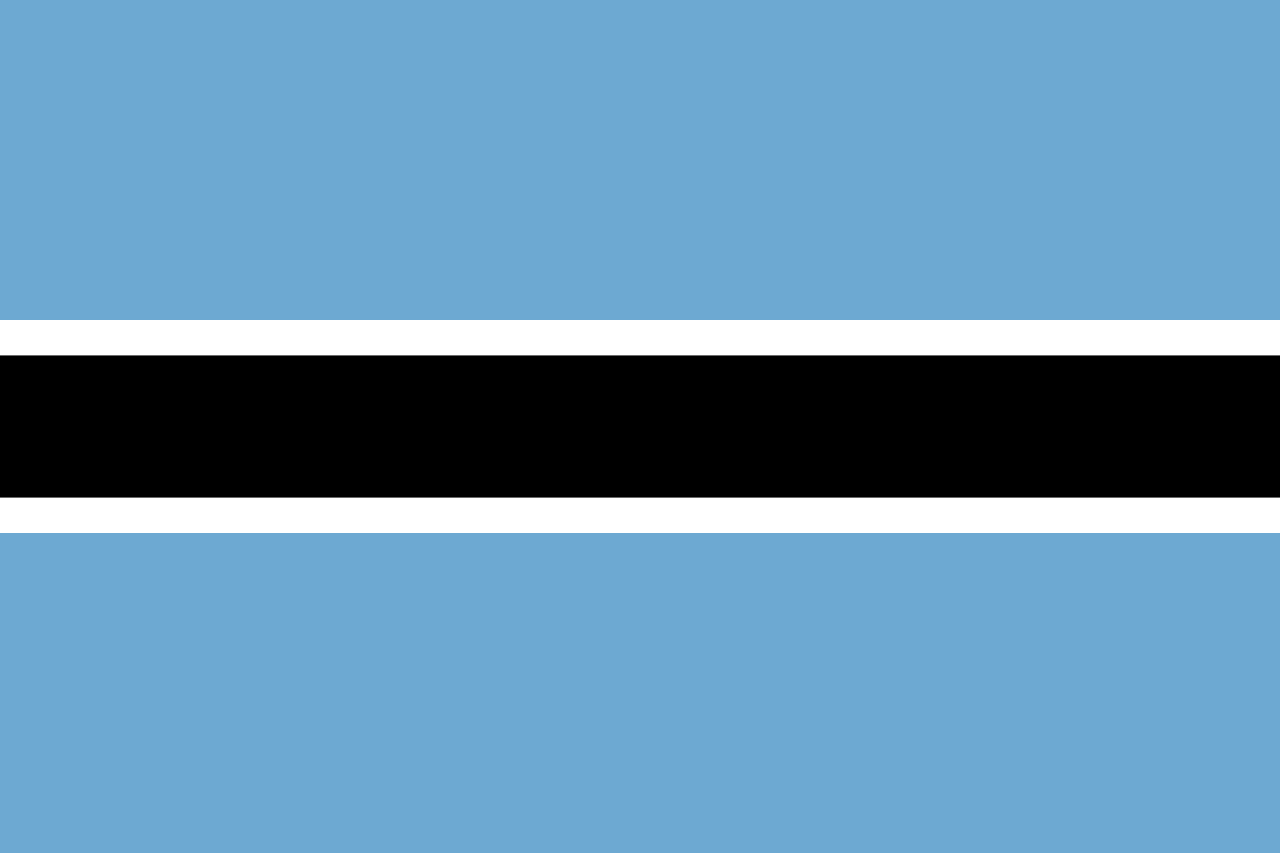
Botswana
Africa
Light blue field with a central black horizontal stripe bordered by thin white stripes, representing the life-giving rains, racial harmony, and the zebra that symbolizes the coexistence of black and white people in peace.
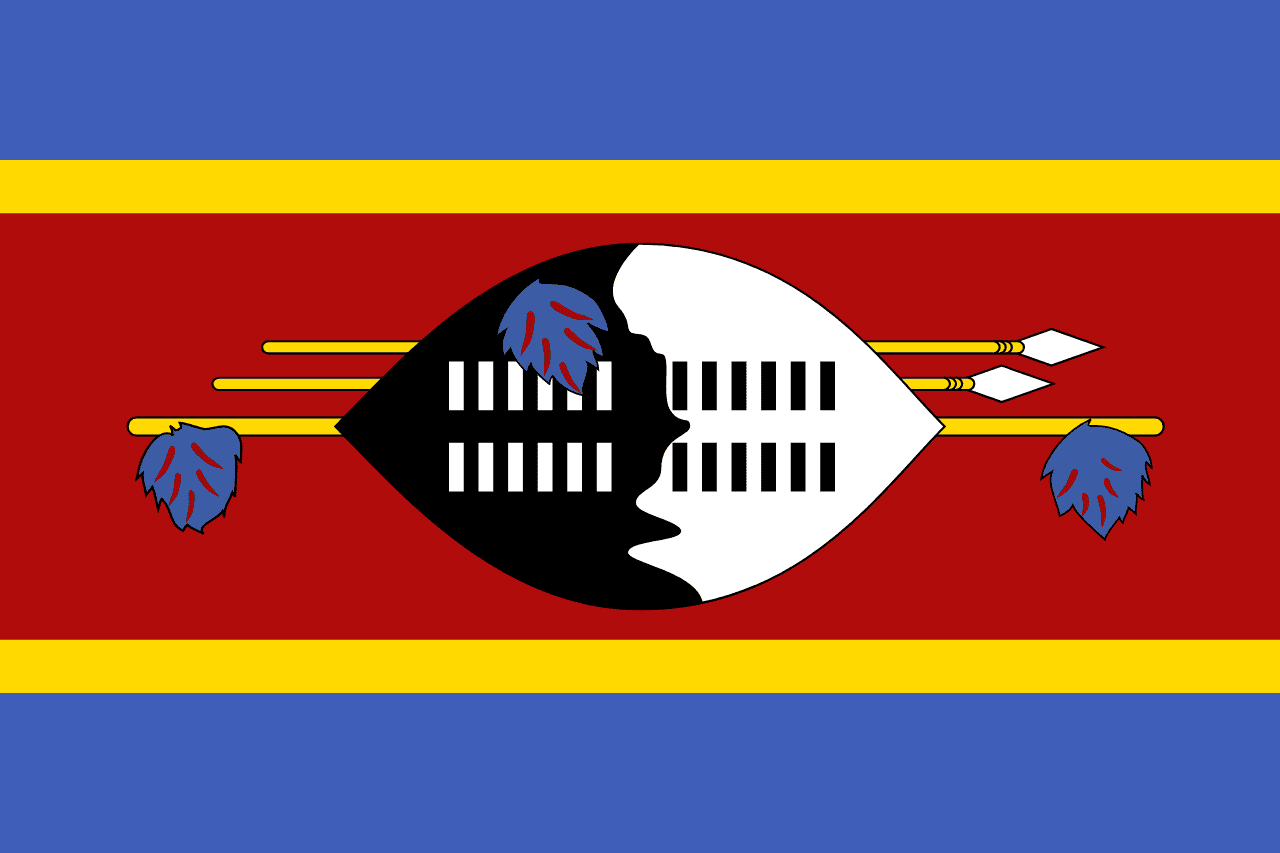
Eswatini
Africa
Five horizontal stripes of blue, yellow, red, yellow, and blue with a traditional Swazi shield and two spears overlaid on the center red stripe, representing peace, mineral wealth, past struggles, and the protection of the kingdom.
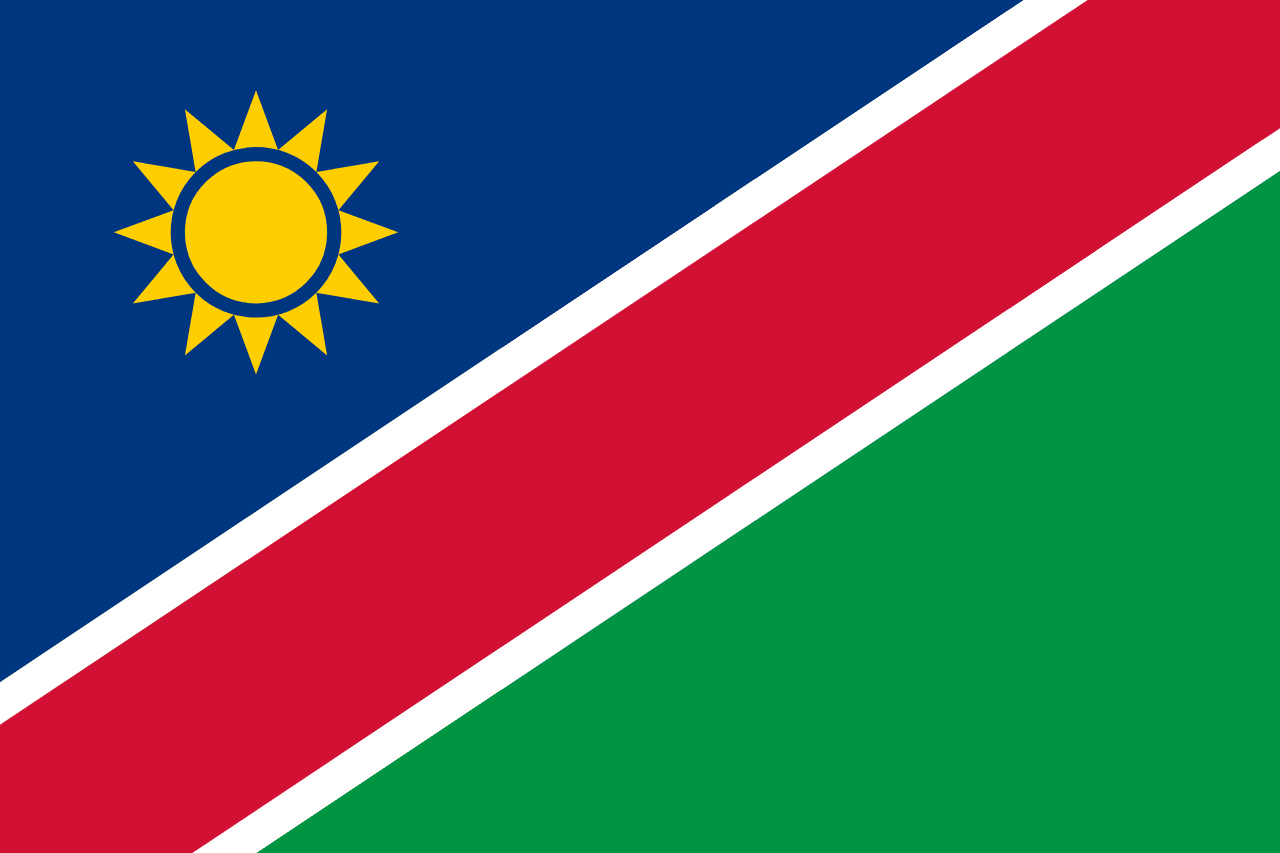
namibia
Africa
A diagonal tricolor divided from the lower hoist to upper fly by a red band with white borders, with blue in the upper hoist containing a golden sun, and green in the lower fly. The design symbolizes Namibia’s land, people, and resources.
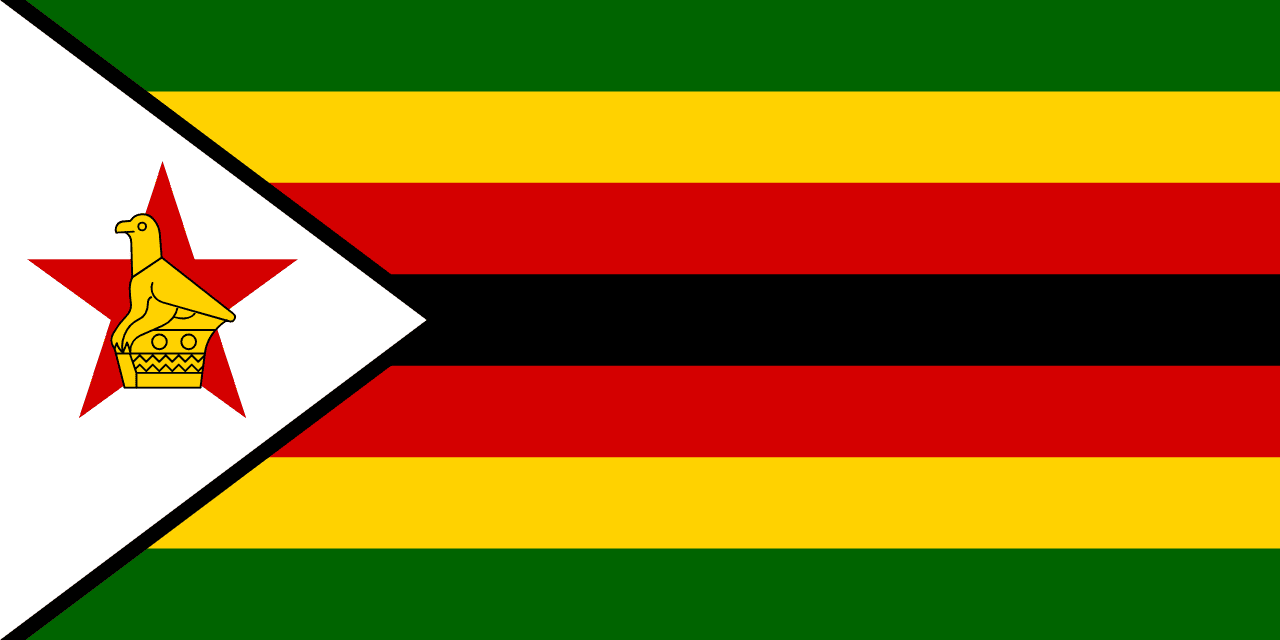
Zimbabwe
Africa
Seven horizontal stripes alternating green, yellow, red, black, red, yellow, green with a white triangle at the hoist containing a red five-pointed star and the Zimbabwe Bird, representing the nation's agricultural wealth, mineral resources, blood shed for independence, the African people, peace, and the ancient civilization of Great Zimbabwe.
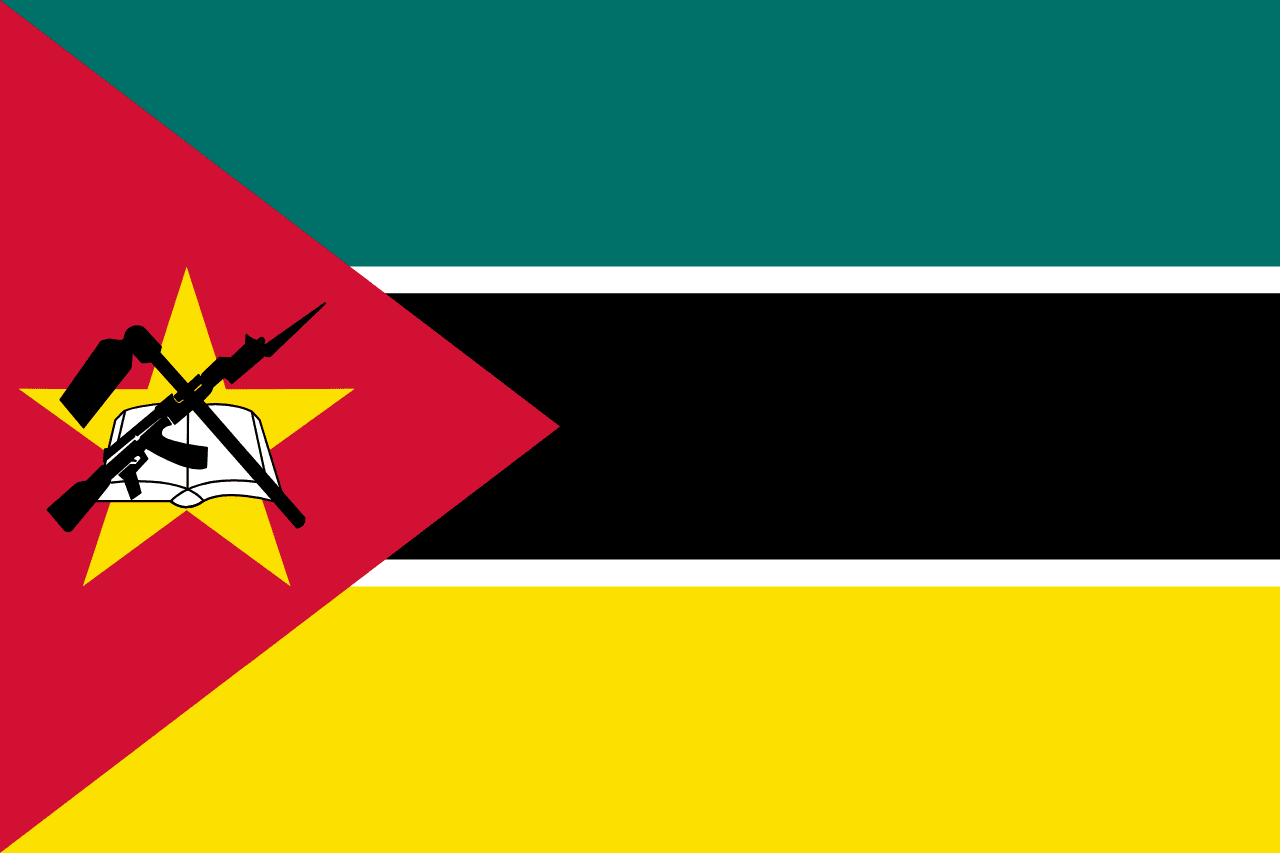
Mozambique
Africa
A horizontal tricolor of green, black, and yellow, separated by white fimbriations, with a red triangle at the hoist bearing a yellow star, a book, a hoe, and an AK-47 with bayonet. The flag uniquely features a modern weapon as a national symbol.